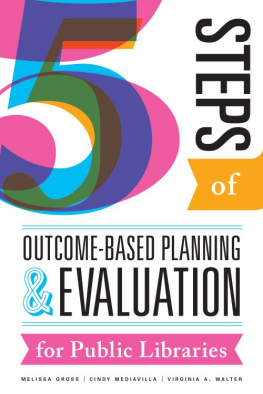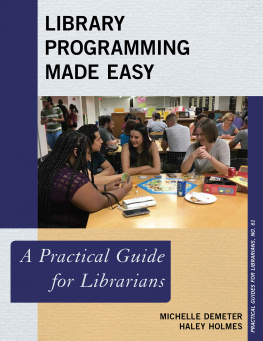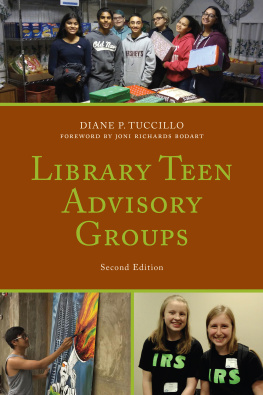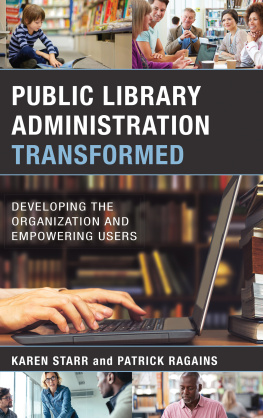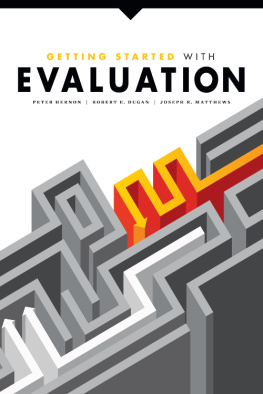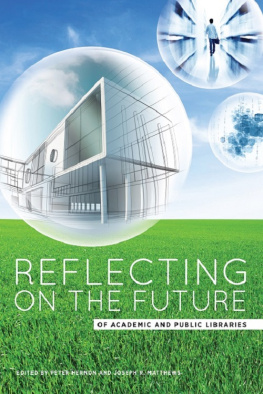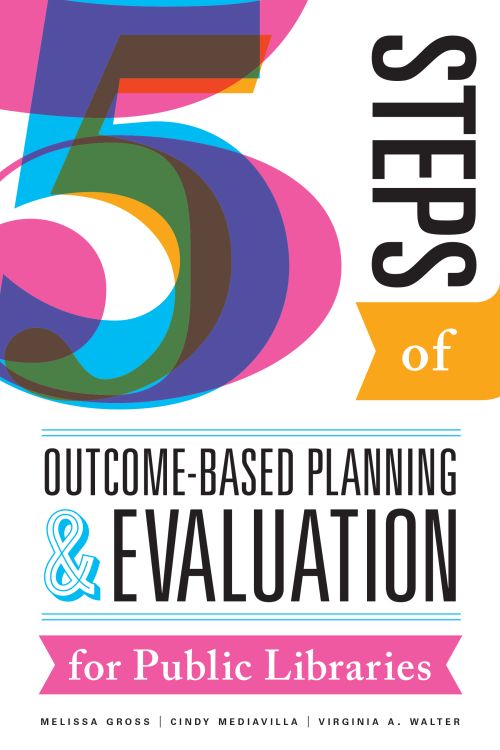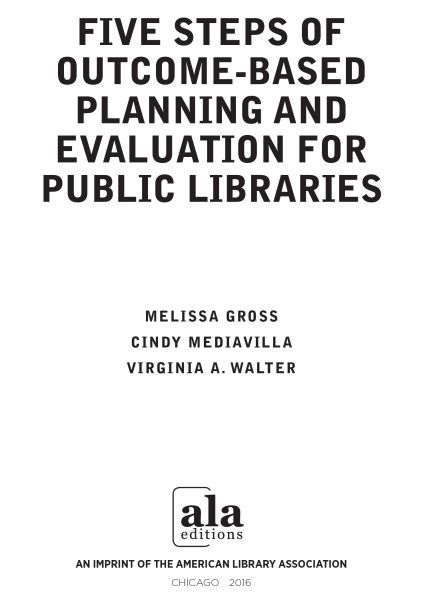I n 2013 we conducted a series of workshops throughout California on how to use the outcome-based planning and evaluation (OBPE) model to enhance and evaluate public library services. The training was a resounding success, with 99 percent of participants saying they now had a much better understanding of outcomes. As one participant enthused, The presenters made what couldve been a very confusing topic easy to understand and approachable. I feel like I can actually implement this without going crazy. Another described the workshop as very important because it helped attendees look at the larger reasons for doing what we do. Inspired by these and other comments, the three of us looked at each other and decided, on the spot, to write this book.
Our goal here is to make the process accessible for readers interested in implementing OBPE in their projects. While other books have tackled the role of outcomes evaluation in libraries, no single volume exists on outcome-based planning and evaluation for public librariesthat is, until now. Our book targets public librarians, but should also be of use to library managers, grant writers, and anyone else developing, implementing, or evaluating new library programs and services for the public.
By the way, it wasnt long before we received requests for more training, and so an encore series of workshops was delivered in eight libraries across California in summer 2015. This time we added content on leveraging program results as the final step of the OBPE process. The workshops were again a huge success, with nearly 200 library staff members attending statewide. This book presents the same content delivered in our OBPE workshops.
Before proceeding, we do want to acknowledge several people and organizations in helping make this publication possible. First is the California State Library, which, through a Library Services and Technology Act grant administered by the Institute of Museum and Library Services (IMLS), made both series of workshops possible. We also want to thank IMLS for supporting the development of the original OBPE model through a demonstration and research grant. And finally, we thank all the workshop attendees, who, because of their overwhelming enthusiasm, inspired us to continue to hone the OBPE model and write this book.
VIRGINIA A. WALTER
M ore and more, libraries are required to demonstrate their importance to stakeholders. Many libraries, like other organizations, engage in strategic planning in order to understand their communitys information needs and to be aware of strengths, opportunities, weaknesses, and threats that can influence success. Evaluation is the process of understanding the extent to which specific goals are reached and provides information that is useful in demonstrating the librarys worth. Evaluating library programs is also essential to continued planning. All of the activities related to strategic planning and evaluation take time, resources, training, and participation from all stakeholders to be performed well. If the process is too overwhelming, it becomes more difficult, if not impossible, for you to accomplish. Therefore, with this book, we have tried to make the process transparent and easy to follow. In our workshops, we urged people to start small and go step-by-step. We recommend that our readers do the same thing.
WHY OUTCOME-BASED EVALUATION?
There are many ways to evaluate library services. Among the most common is measuring inputsthat is, the resources you have and use to provide and support what you do. Inputs tend to be expressed numerically and capture the quantity of the various resources you use to provide service. Examples include numbers of librarians and staff, size of collections, amount of computers, and the librarys physical infrastructure (e.g., square footage, number of meeting rooms, total seating, etc.). When describing your library in terms of inputs, you usually equate quality of service with the number of staff, books, computers, and so on that the library contains for its size. Your inputs might then be compared to professional standards or similarly sized institutions to determine how well your library is performing. The annual documentation of inputs allows you to track the librarys performance year to year or conduct trend analysis over several years. However, an increase in resources, or even knowing the library has a wealth of resources, doesnt tell you much about the extent to which, how, or with what effect people use your services.
Consequently, the library field developed output measures that describe resource use. Beginning in the 1980s, a series of output measures books for public libraries was published by the American Library Association (ALA) and its divisions (Van House, Zweizig, and the Public Library Association New Standards Task Force 1987; Zweizig and Rodger 1982; Walter 1992; Walter 1995). Outputs were later incorporated into measuring the needs of networked public libraries (Bertot, McClure, and Ryan 2000) and into the evaluation of digital reference services (McClure, Lankes, Gross, and Choltco-Devlin 2002).
Output measures typically focus on how much or how many of the librarys resources are used. An output measure collected by most libraries is circulationthat is, the extent to which materials are being checked out. Circulation statistics tell us how often items are checked out, and for how long, and are typically used to determine library funding. Other common output measures include program attendance and reference transaction counts. When program attendance is strong, and maybe even growing over time, you usually take this as a sign of success. Likewise, you might track the number of reference transactions to determine usage patterns, so you can schedule the reference desk accordingly.
Input and output measures provide useful data, but they dont tell us how library programs benefit participants. Neither do they tell us anything about user satisfaction or what the library means in the lives of the people it serves. Therefore, the Institute of Museum and Library Services (IMLS) began to look for additional ways to evaluate and talk about programs and services in terms of their impact on peoples lives. Though it may be good to know that 100 community members attended a lecture at the library, it also helps to know what effect the lecture had on its audience. Did the lecture help make them better citizens, more literate, more employable, happier? Outcome measures are designed to support evaluation that gets at the human experience and allows you to use the voices of participants to talk about the merits, as well as the shortcomings, of that experience. While outcomes may be used in conjunction with inputs and outputs, they differ from them fundamentally in that outcomes focus on human impact, which is often described through the participants own words. Not only does this feedback tell you how effective your services are, but it can also be used to make program improvements, to terminate programs that arent working, and to help you design new programs.

